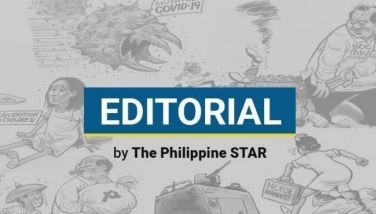The road to EDSA

The classic definition of people power is “political pressure exercised through the demonstration of popular opinion,” which ultimately forces the government into complete surrender. People power has traditionally been used to force governments, through nonviolent means, to accept political and social changes.
After the 1986 elections, it was clear that Cory Aquino had won but the election count was being altered. The Commission on Elections (COMELEC) count showed Marcos with a narrow lead, but the NAMFREL showed Cory leading by more than a million votes.
On Feb. 9, 1986, two days after the election, the state-run television showed 30 computer technicians led by Linda Kapunan, suddenly standing up and walking out of the COMELEC tabulation center at the Philippine International Convention Center (PICC), with computer diskettes in hand. They later announced that they were protesting the manipulation of election results to favor the Marcos candidacy.
These events had set the stage for the final phase of the people power movement.
Tagumpay ng Bayan
The Batasang Pambansa finally declared Marcos as the official winner. The question in everybody’s mind was, “What do we do now?”
Cory Aquino decided it was time to call the people to another rally. Veteran politicians protested, saying it might make matters worse and that fear of persecution would result in a low turnout. But Cory insisted that she felt the people were waiting for a call for action.
A group of opposition leaders from the political, cause-oriented, and business sectors met in the Cojuangco Building in Makati to discuss the venue. Cory wanted the rally to be held in Luneta. There was near-unanimous disapproval. As someone pointed out, it would take a million people to fill up Luneta.
Plaza Miranda and Liwasang Bonifacio could be easily filled with 20,000 to 50,000 diehard supporters. The business community proposed Ayala Avenue and promised to bring down their employees from their offices. But Cory said it had to be in Luneta so that we could find out whether the people were still prepared to continue the fight or were ready to surrender.
On Feb. 16, 1986, the Tagumpay ng Bayan rally was held at the Luneta. The crowd was estimated to have reached two million. In her address, Cory called for a boycott of firms and publications identified with Marcos and his cronies. She also announced a civil disobedience campaign that would include a refusal to pay taxes.
The Filipino people were now preparing for more rallies and acts of civil disobedience, including a possible general strike. On Saturday, Feb. 22, 1986, meetings were being held in small groups throughout the nation to prepare everyone for the coming week. Cory Aquino left Metro Manila to go to Cebu and other provincial cities to carry her message of continuing the struggle for freedom.
4 days of EDSA
The story of those four days in EDSA has been told and retold in many books.
Cory Aquino was in Cebu City on the first day. After a night in the Carmelite convent, she flew back to Manila on the second day. She stayed in the house of her sister, Josephine Cojuangco Reyes in Wack Wack. She felt the place was more secure and it was right next to EDSA.
Everyone was urging her to stay secluded for fear that Marcos or his minions would make an attempt to assassinate her. But on the third day, a Monday, Cory Aquino disregarded all advice and ran out to the car and had herself driven to the POEA building located at the corner of EDSA and Ortigas Avenue.
Standing on the front steps of the POEA building, she told the crowd to remain vigilant because Marcos was still in the country. She also noted that this people power movement was unprecedented because this time, it was the civilian population who were protecting the military.
There was a growing consensus that Cory Aquino needed to be sworn in as president before any military junta could be set up. The people massing all over the Philippines also needed to see that there would be a peaceful transition once Marcos departed from Malacañang.
At around 11 a.m. on Feb. 25, 1986, in Club Filipino, Corazon Aquino was sworn in as president of the Republic of the Philippines. After her short inaugural speech, she and her children went to Manila Memorial Park to visit the tomb of Ninoy Aquino.
On that April day in 1978, when the LABAN candidates, with Ninoy Aquino as their leader, held the first people power rally with less than 50 people in the St. Andrew’s Church courtyard, no one ever imagined that the journey would end with more than two and half million people massing at EDSA.
Some say that Cory once said: “When I become president, there will be dancing in the streets.” There are others who say that what she actually said was: “When I become president, there will be democracy in the streets.”
I say that when Cory Aquino became president, there was both.
Excerpted from The Aquino Legacy: An Enduring Narrative by Elfren Sicangco Cruz & Neni Sta. Romana Cruz (Imprint Publishing, 2015). Available at Fully Booked, National Bookstores, Pandayan, Popular, Solidaridad, Mt. Cloud Bookshop.
Creative writing classes for kids and teens: March 4, Dr. Seuss Day (1:30pm-3pm). Creative nonfiction writing for adults with Marites Danguilan Vitug: March 11 (1:30pm-4:30pm).Classes at Fully Booked Bonifacio High Street. For registration and fee details text 0917-6240196 or email [email protected].
Email: [email protected]
- Latest
- Trending























